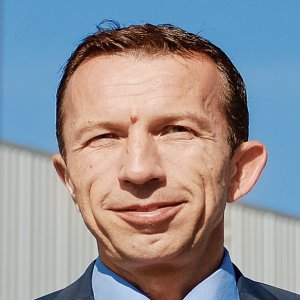Training Expertise Paves Road to Success

Q: What was your vision for the automotive sector in Guanajuato as newly elected Governor in 2012?
A: Our strategy was based on continuity, with medium and long-term projections. During the last administration, Honda and Mazda announced investments in Guanajuato. Our challenge was to be ready for these companies so they could start their operations as smoothly as possible. We wanted to consolidate Guanajuato as the most important automotive cluster in Latin America and we are sure this industry will be crucial to the state’s development for many years. We have always been supported by the federal government during these processes but promotion and the negotiations were handled regionally. All of these processes are supervised by the Minister of Economic Development and the Deputy Minister for Investment Attraction through the Investment Attraction Committee and backed by our influential investment attraction office, based in Chicago. This team, led by Juan Manuel Fernández, is in charge of promoting Guanajuato all over the world.
Q: What has made Guanajuato such an attractive state for foreign direct investment?
A: Some of our main advantages are available human capital, education and our training expertise. In 2014 Guanajuato had the country’s largest number of nationally trained people, totaling 100,000 trainees. Our educational offering is wholly directed at the industry, with mechanical, electrical and industrial engineers, as well as topics covering robotics, nanotechnology, mechatronics and aeronautics. Our main objective is to prepare our students for every challenge they might face in the industry. Guanajuato also has an excellent labor environment with next to no strikes, offering stability to companies that want to establish facilities in the state.
Our geographical position is also a huge asset. We are centrally located and were labeled “Mexico’s Diamond” in a survey conducted by Fundación Metropoli. The survey also showed Central Mexico occupies only 17 percent of the national territory but is home to 50 percent of the entire population and generates 51 percent of the country’s GDP. Guanajuato has connections to every state, making what is arguably the best road infrastructure in the country the perfect logistics platform for all companies. The tourism industry is closely related to all these developments. Many foreigners who move to Mexico have found that Guanajuato is an ideal place to live in terms of entertainment and recreational activities.
Q: What are the main opportunities for attracting more investment from foreign players?
A: Mobility could be improved to promote the use of public transportation, improving the punctuality and overall quality of the services, while connecting the industrial sector with hospitals, schools, the city and the airport. We just opened a new highway and we are halfway through another project, both of which will facilitate an integral mobility system we hope to install. We have set this goal for 2016 and by 2017 we plan to extend this network to Celaya, linking all the industrial parks in Irapuato, Salamanca and Villagran. We are also discussing with our neighboring government the possibilities of expanding this project all the way to Queretaro. Finally, an opportunity for executive taxis will open doors for many drivers in that segment.
The state’s industrial infrastructure has also developed exponentially. At the beginning of this administration, we projected only seven industrial parks but we are now close to 15. There is a long list of companies interested in establishing facilities in Guanajuato and Toyota and Ford will bring another wave of newcomers with them. According to INEGI, we have had almost four times as much growth as other states, with a 9.4 percent index, and created thousands of new jobs. But it is important to diversify our market. Guanajuato has welcomed diverse companies, including Ferrero Rocher, Mars, Colgate Palmolive, Procter & Gamble and Nivea, and we will inaugurate a Nestlé plant.
Q: How has the government maintained the quality of life of its residents, despite increased costs of living that multiple investments have generated?
A: In terms of quality of life, the most important factor is income. I am convinced this will continue to increase because of the inherent competitiveness of our workforce. Given the fierce competition in the region, all companies have to protect their employees and offer incentives to stay or they will go to another employer. To prepare our local workforce, our public universities have become bilingual to adapt to the needs of the industry.
Guanajuato works closely with the Mexican Employer’s Confederation (COPARMEX) and several companies to offer the German dual-education system for students simultaneously studying and working in the industry. Japanese companies are now participating in this program contributing to its success. Furthermore, the State Commission for Higher Education Planning and the State Committee for Compulsory Education Planning and Programming have helped us address the needs of every industry in Guanajuato.
We also work with a council formed by unions, companies and private education institutions, including ITESM. Over the last three years, we have opened close to 315 technical high schools. Technology is a priority not only for students but for teachers as well. Seven innovation parks also have been opened to start new businesses in public and private academic institutions.
Q: How has foreign investment influenced cultural diversity in Guanajuato?
A: Our local population has accepted and integrated foreigners extremely well. It is now common to see our Japanese residents in public markets, stadiums and restaurants. In fact, the Japanese government is placing a consulate in Leon, providing all the services that our Japanese residents may need.
There is an amazing cultural exchange between our two nations. This does not mean we do not have strong relationships with other cultures and countries but largely thanks to automotive investments, Japan has the strongest influence in the region. We have companies from over 30 different countries and all of them have influenced our local people in their own way, while also integrating Mexican culture into their lifestyle.























